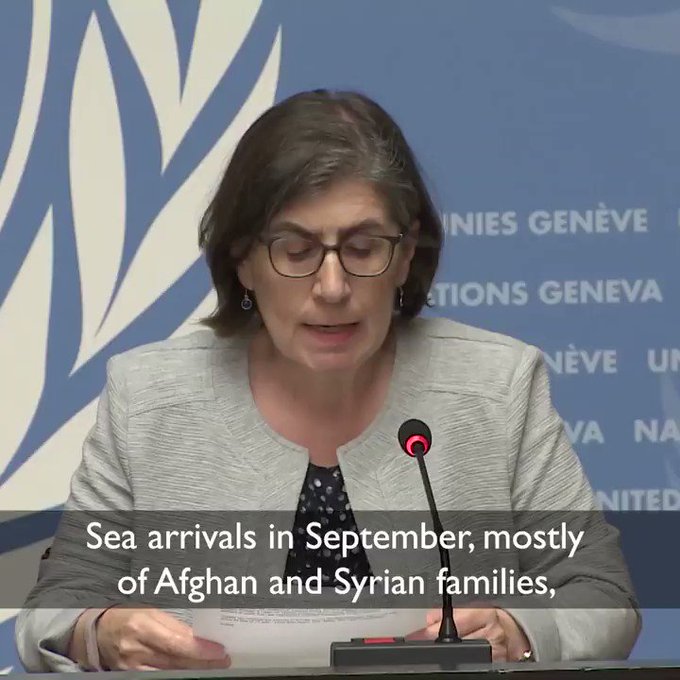
© UNHCR/Gordon Welters
A Syrian family from Idlib who have recently arrived in Lesvos, Greece, take shelter in an olive grove adjacent to Moria reception centre. (23 September 2019)
1 October 2019
SDGs
A spike in the number of refugees reaching Greek island reception centres is likely to worsen the situation in already “dangerously overcrowded” facilities there, the UN refugee agency said on Tuesday.
In a call for asylum seekers to be moved urgently to the mainland by the central Government in Athens, UNHCR reported that sea arrivals in September rose to more than 10,000 - the highest monthly level since 2016.
The development follows a fire on Sunday in a housing container at Moria reception centre in Lesvos in which a woman died, reportedly sparking a violent protest.
Sea arrivals in September, mostly of Afghan and Syrian families, to Greek islands increased to 10,258 – the highest monthly level since 2016 – worsening conditions on the islands which now host 30,000 #asylum seekers. @Refugees spox provides an update to @UNGeneva press corps.

“This spike has added to, has worsened what were already extremely difficult conditions on the Greek islands in the reception centres, which is why we are underscoring it is so important that urgent measures are taken now to get people who can be transferred off the islands to the mainland,” UNHCR spokesperson Liz Throssell told journalists in Geneva.
According to the UN agency, there are more than 4,400 unaccompanied children on the islands, out of at least 30,000 people seeking shelter in total.
Of that number, 500 youngsters have also been housed with unrelated adults in a large warehouse-style tent, UNHCR says, describing the situation on Lesvos, Samos and Kos as “critical”.
Highlighting the need for “urgent steps” from the Greek authorities, Ms. Throssell appealed to them to “fast-track” the transfer of more than 5,000 asylum-seekers who already have permission to continue their asylum procedure on the mainland.
On Lesvos, the official reception centre in Moria is at five times capacity, with 12,600 people, the agency said, while at a nearby informal settlement, more than 100 people share a single toilet.
On Samos, the Vathy facility houses 5,500 people – eight times over capacity – and on Kos, some 3,000 people live in a space meant for just 700.
Most of those seeking shelter are from Afghanistan and Syria, along with Iraq and the Democratic Republic of the Congo, UNHCR said.
Previous comments by the Greek Government about wanting to alleviate pressure on the islands and protect unaccompanied children were welcome, the agency said in a statement.
According to UNHCR, Greece has received 45,600 of the 77,400 people crossing the Mediterranean Sea this year - more than Spain, Italy, Malta and Cyprus combined.
Mediterranean Sea crossing deaths top 1,000 for sixth year in a row
Meanwhile, for the sixth year in a row, 1,000 people are believed to have drowned in Mediterranean Sea crossings, the UN migration agency, IOM, said on Tuesday.
Citing a recent spate of shipwrecks along the main migratory routes to Europe which have contributed to the toll, the agency highlighted an incident off the Moroccan coast at the weekend in which as many as 40 migrants are feared drowned.
Over the past six years, at least 15,000 men, women and children have lost their lives trying to reach Europe by boat – a situation that the UN agency likened to “carnage at sea”.
According to IOM data, the deadliest sea crossing is the central Mediterranean route from North Africa to Italy, with 659 migrant or refugee lives lost so far this year.
Nearly 270 others perished trying to reach Spain from North Africa, while 66 victims were recorded in the waters between Turkey, Syria and Greece.
https://news.un.org/en/story/2019/10/1048312
http://creativecommons.org/licenses/by/3.0/legalcode
Комментариев нет:
Отправить комментарий